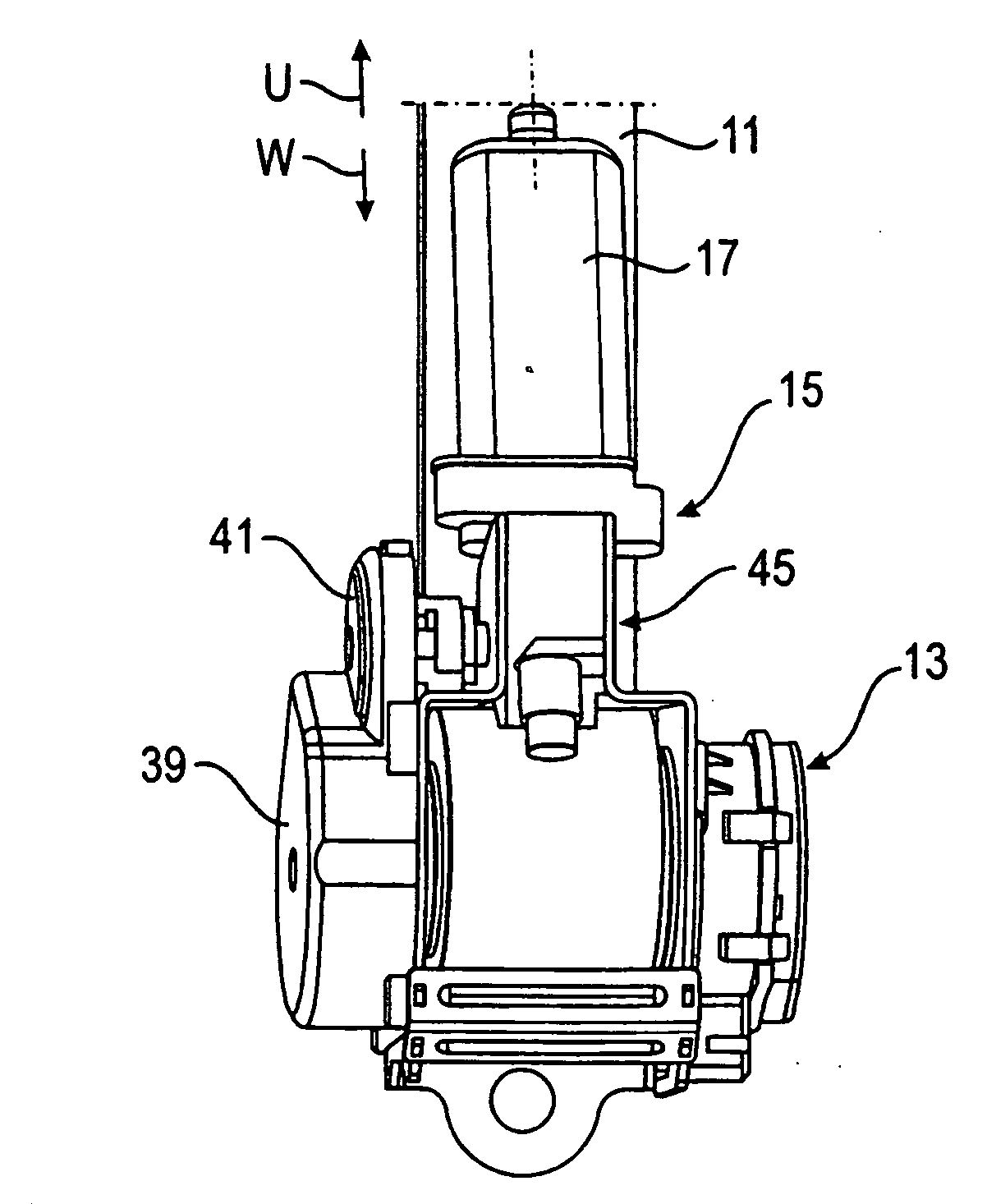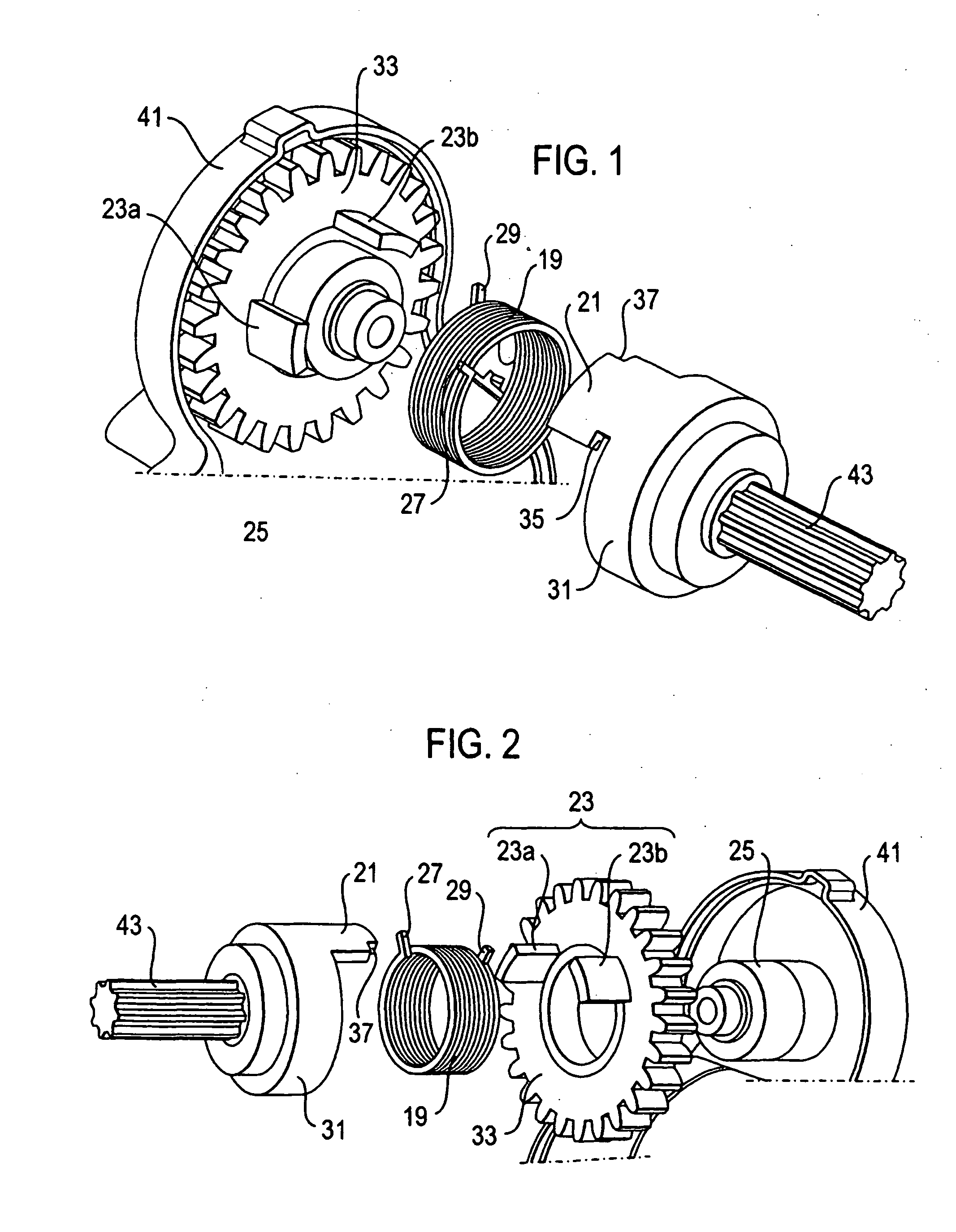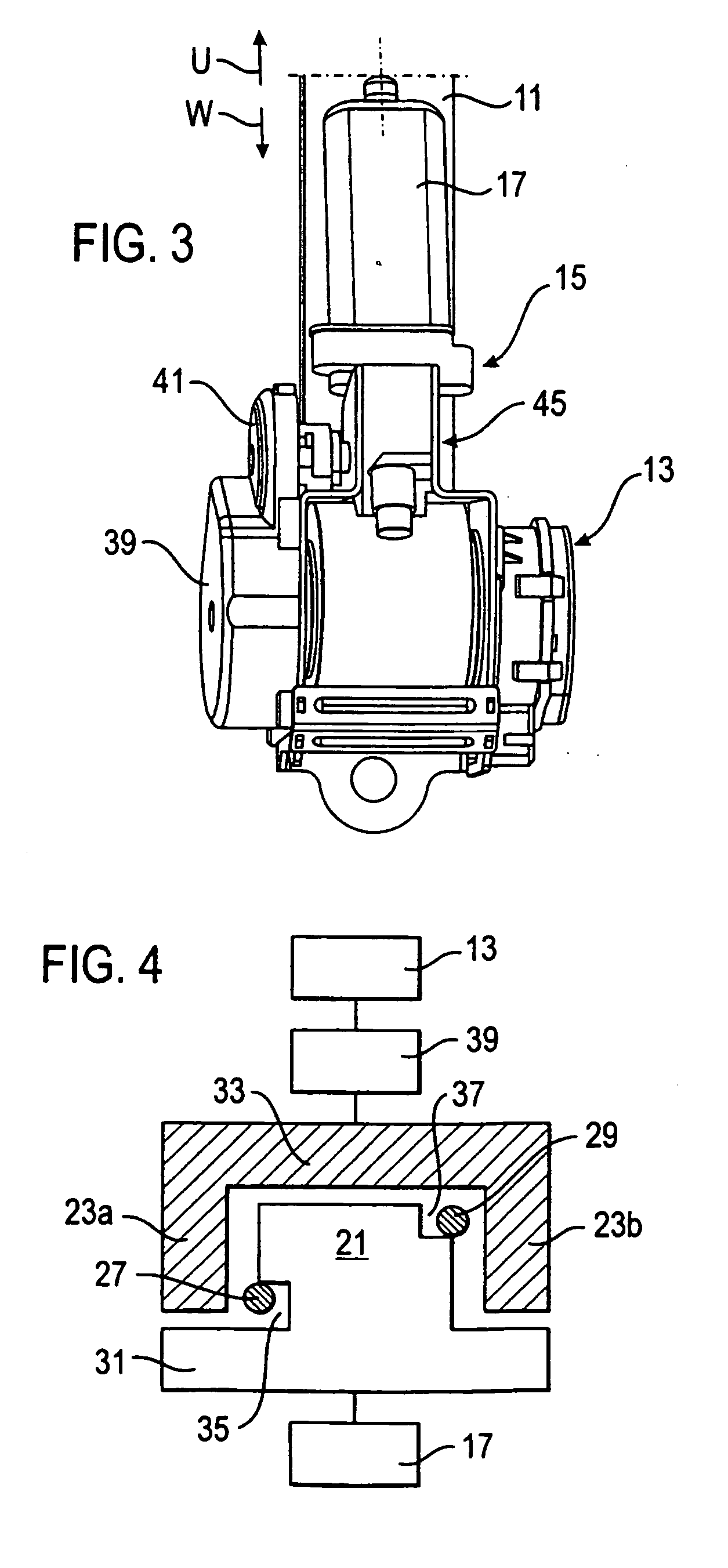Seat belt apparatus
a seat belt and belt locking technology, applied in the direction of safety belts, pedestrian/occupant safety arrangements, vehicular safety arrangements, etc., can solve the problems of belt locking having to be released, overheating or overloading of motors, and dangerous reactions of occupants
- Summary
- Abstract
- Description
- Claims
- Application Information
AI Technical Summary
Benefits of technology
Problems solved by technology
Method used
Image
Examples
Embodiment Construction
[0032]There are visible of the powertrain in FIGS. 1 and 2—between the drive 15 (FIG. 3), comprising an electric motor 17, on the one hand, and the belt retractor 13, on the other side—on the motor side, a drive shaft 43 having a rotationally fixedly connected support 31 for a drive section 21 on the motor side and, at the belt side, a toothed wheel 33 which is arranged in a housing 41 and which serves as a carrier for a drive section 23 on the belt side which is divided into two parts and which comprises two components 23a, 23b spaced apart in the peripheral direction.
[0033]The drive sections 21, 23 are made as axial projections which are arranged at a radial spacing from a rotary axis which coincide with the central axes of the drive shaft 43 and of a spigot 25 fixed to the housing. The support toothed wheel 33 at the belt side is rotatably supported on the cylindrical spigot 25.
[0034]In the assembled state (FIG. 3, FIG. 4), the drive section 21 on the motor side is located betwee...
PUM
 Login to View More
Login to View More Abstract
Description
Claims
Application Information
 Login to View More
Login to View More - R&D
- Intellectual Property
- Life Sciences
- Materials
- Tech Scout
- Unparalleled Data Quality
- Higher Quality Content
- 60% Fewer Hallucinations
Browse by: Latest US Patents, China's latest patents, Technical Efficacy Thesaurus, Application Domain, Technology Topic, Popular Technical Reports.
© 2025 PatSnap. All rights reserved.Legal|Privacy policy|Modern Slavery Act Transparency Statement|Sitemap|About US| Contact US: help@patsnap.com



